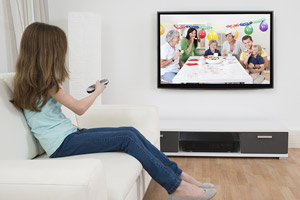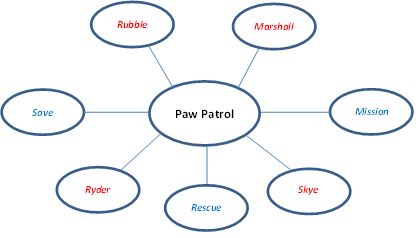Blog Categories
Search Blog
Blog Categories
Changing the Channel: A Guide to Using Television to Support Language Development
Parents often ask me whether watching television will help or hinder their child’s language development. Unfortunately, the answer to these questions is not as simple as “yes” or “no”. For young children who are beginning to learn language and are using single words or two-word phrases to communicate, it can be difficult to extract new vocabulary from television shows when the characters are using full sentences and often, a fast rate of speech. That being said, the ideas and topics explored in these shows are often relevant and important and the interactions between characters provide a great model of conversational speech and social turn-taking. For these reasons, television can be made into a language-learning activity with a few strategies in mind.
Get Down to your Child’s Level
Being mindful of your child’s language level is very important. Recognizing whether your child is communicating using single words, two-word phases, or sentences will help you to reinforce the language in television shows in an accessible way. If your child is communicating using single words, repeat key words from the dialogue. For example, in a scene where one character is chasing another character, words that can be modeled are “run,” “chase,” “catch,” “fast.” These words should be modeled and paired with the actions as they are happening in the show. If your child is communicating using short phrases, word combinations can be modeled, such as “run fast” and “chase ____”. Modeling language in this way can help your child to better understand the content of the show, and to produce relevant words and phrases while watching.
Discuss the Show Afterwards
For older children who might wish to discuss the shows that they have watched, you can help them to do so by making it easier for them to recall important information. This information may be related to the characters and main ideas depicted in the television show. Drawing pictures of the characters or printing them from the internet can help with labeling their names and characteristics. Drawing a visual representation of the main idea in the show can also help with discussing the content. Sometimes I suggest using a concept web (see below) to address details related to a specific topic. If the television show of choice is “Paw Patrol”, the characters can be written out and a picture of each can be drawn beside their names. Other information about the show can be added to the web, such as “rescue”, “save”, “mission”, with accompanying pictures. This will help to guide discussions about the show and will help your child to focus on the key components.
Ask Specific Questions
In order to encourage a discussion about the details of the television shows that your child is watching, ask specific questions. Asking general questions such as “How was Paw Patrol” will likely yield vague responses. Instead, focus on the important components of the show, such as “who” the characters are, “where” the show takes place, “what” the mission of the show is, and “how” the mission is accomplished. You can also offer your comments on these various topics to add to the conversation and model appropriate responses to these questions.
With these tips in mind, watching television can be an educational activity and one that lends itself to a variety of language-learning opportunities. Happy watching!







